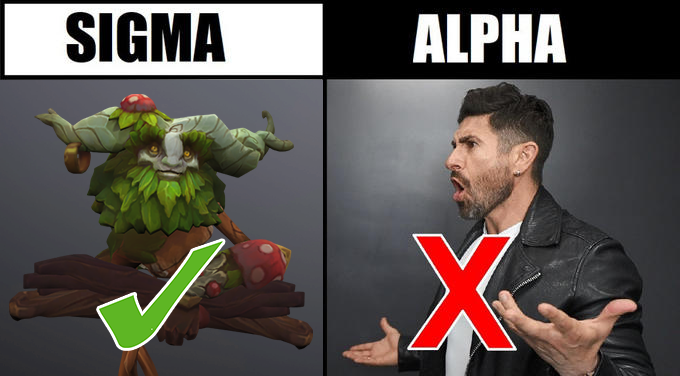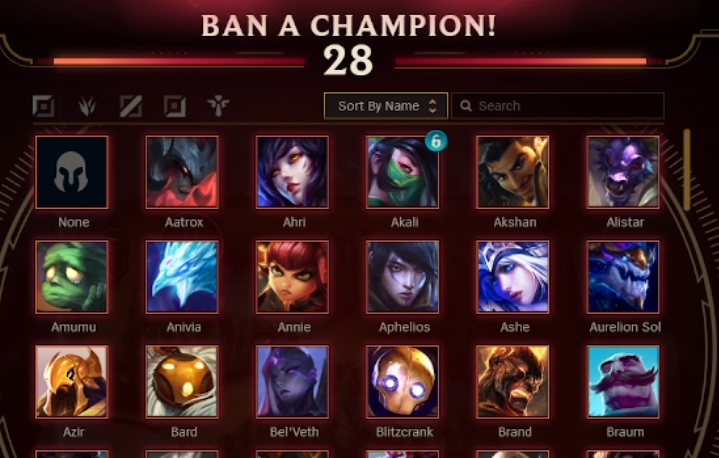Jungle Concepts: Creating Tempo
A detailed guide on leveraging Ivern's passive to generate tempo and leads in the jungle.

On the surface, Ivern looks like a champion with nothing but weaknesses. His clear is slower than other junglers, his ganks are not as good, he can't counterjungle or contest camps, he doesn't have a particularly strong early or late game, his clear isn't healthy, and so on. Ivern is a failure of a jungler by pretty much all conventional metrics. So that begs the question: how do you get ahead?
Jungling and Opportunity Cost
As any decent jungler will tell you, the jungle role is all about managing what you do with your time. If you skip your raptors to gank mid, it means the potential benefit of the gank must be greater than what you would gain by taking the camp. In other words, your time as a jungler is valuable because by choosing to influence the map, you're using time that could've been spent farming or resetting.
Because of this, it's usually more preferable to look for plays while your camps are respawning. You can think of a camp respawning as it passively generating value regardless of where you are. This makes it more preferable to clear camps when they're alive and look for plays to make while they're respawning.
In short, the more camps you have respawning, the less opportunity cost you incur by ganking.

Now let's look at Ivern. Since Ivern can clear camps without being on them, his main advantage comes from being able to spend his time at less of an opportunity cost. Instead of choosing between ganking or farming, he can gank while farming. This leads to three major benefits:
- If Ivern forces a response out of the enemy jungler, they lose more by showing up than he does. This makes scenarios like going even 1 for 1 on a skirmish still benefit Ivern more. This also applies to responding to a play that the enemy jungler makes.
- Ivern can afford to go for more low-value/subtle plays like fixing laners' wave states or clearing vision (which other junglers couldn't do since they lose too much)
- Ivern's pathing is a lot harder to track because he can gank on many different timings. While most junglers will clear into a gank, Ivern can gank during his clear, making him less predictable.
Understanding these benefits and using them to your advantage is the key to success when playing Ivern in the jungle.
Practical Examples: Good and Bad Pathing
So now that I have the theory out of the way, let's get into how it is applied in practice. Let's go over 2 examples of Ivern paths and I'll explain why they're either good or bad:
Note: Pathing is completely situational, so there's still instances where the example "bad path" would be better than the "good path". Instead of copying them camp for camp, try to implement these ideas into your own play.
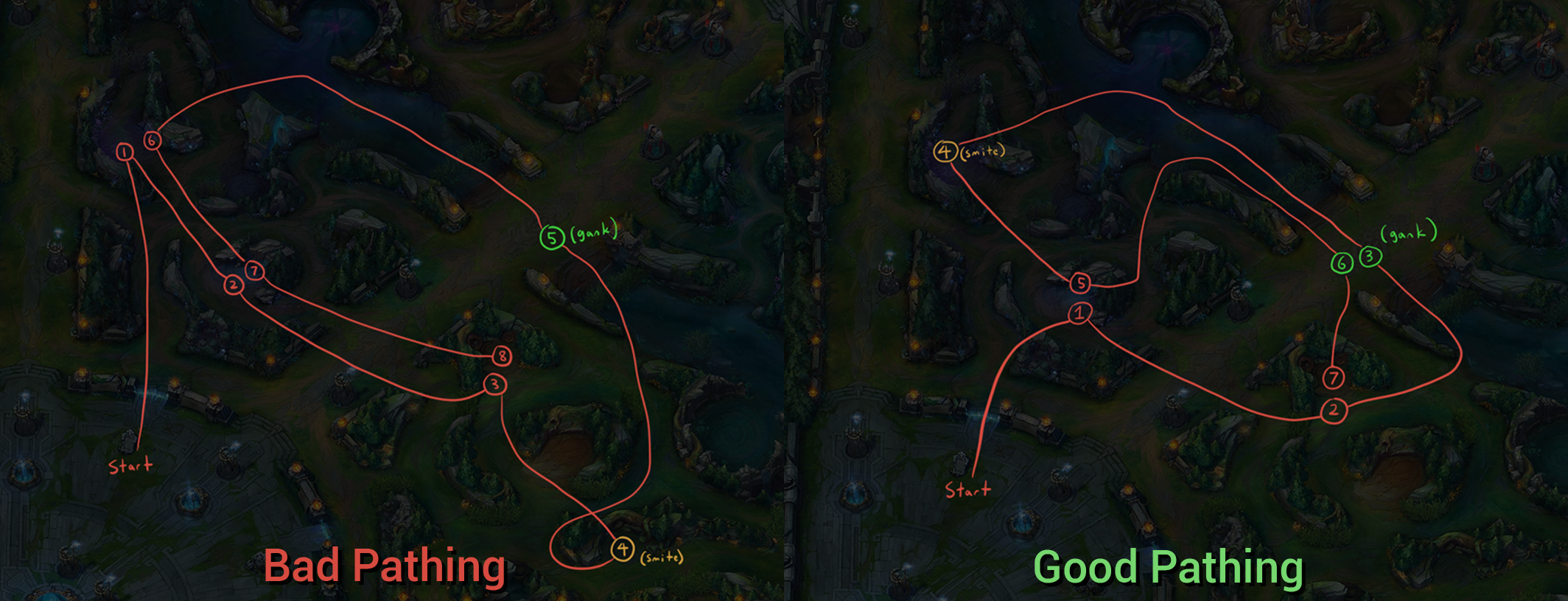
For context, the scenario in both of these games are the same. Both teams' junglers did full clears, got a scuttle crab, and reset with around 1100 gold each. With the second rotation of camps spawned, we're now deciding how to get ahead during the pivotal second clear.
Bad Pathing
First of all, I want to mention that this path isn't actually that terrible. The reason I chose this as my example is because it's a path that might work, but plays against Ivern's core strengths as a jungler. If I were to use a genuinely awful pathing example, there would be nothing to learn.
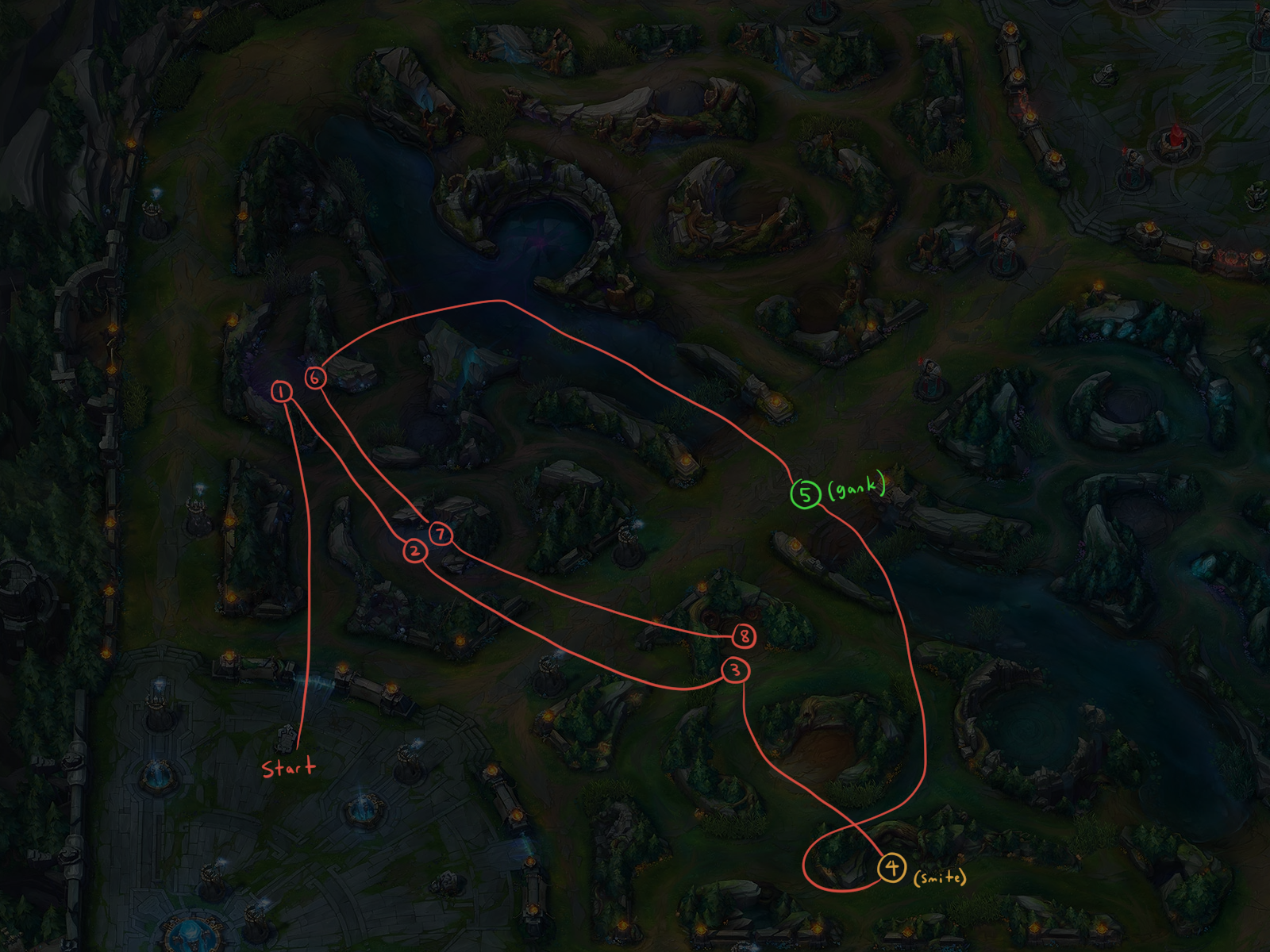
With this path, the first thing that stands out is the time it takes to get the first gank out. Even with lucidity boots, marking all 4 camps and running mid takes around 42 seconds, which is enough time for most junglers to clear gromp -> wolves -> raptors at level 4. This means that during the gank, the cost for the enemy jungler to respond is low since they have 3 camps respawning, made even worse by the fact that the enemy jungler will be level 5 while Ivern's still at level 4.
The second thing of note is how long the path is. At level 4, Ivern's passive takes 34 seconds to complete. This means that after marking a camp, you'd ideally want to make a path that returns to it close to 34 seconds later. By the time this path smites krugs, gromp and wolves are already finished, but it takes another 35-50 seconds to loop back around to clear them. These 35-50 seconds can be seen as "wasted value".
To expand on this idea of wasted value, it's not that leaving the camps up is inherently bad, but it means that the gank mid would need to be greater in value than the camps you're leaving up. By having completed camps, the opportunity cost for ganking has increased since you now have to choose between clearing or ganking.
In summary, this path is bad because by the time the gank comes out, the Ivern's presence has a high opportunity cost and the enemy jungler's presence has a low opportunity cost. If this play were to have gone even, Ivern loses more by being there.
Good Pathing
For this example, I picked the closest thing I could find to an optimal path from one of my replays. Now that we've seen an example that played against Ivern's strengths, let's observe what happens when you play towards them.
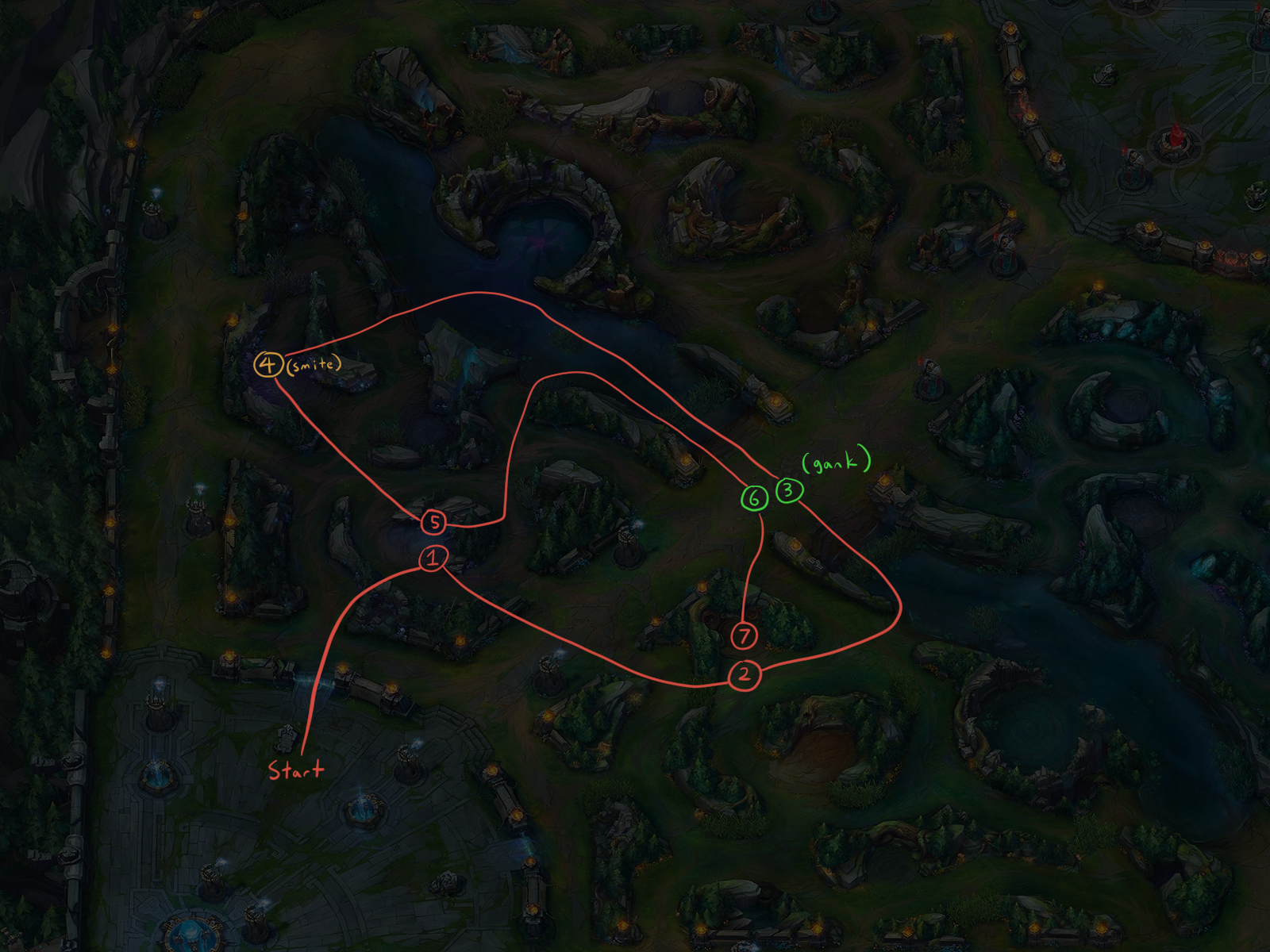
The first major difference to spot is how quickly the first gank happens. I've opted to skip marking gromp to save time, and arrive mid in roughly 18 seconds. During that time, the enemy jungler could only finish gromp, so it would cost them a lot to respond to this play. On the other hand, I have 2 camps ticking during the gank, so the cost of my presence is extremely low.
In practice, this means that I don't even need to gain much of an advantage for this gank to be considered successful. If the gank simply helped them get prio or created some pressure, it's still a win. This also means that if the gank results in a flash or kill, it's even better since it came at such a low cost.
After the first gank, I walk over to the topside jungle and use smite on the gromp that I previously skipped. Having smite allows you to create "holes" in your path to get your ganks out faster, and is also why cosmic insight and lucidity boots are so great on Ivern. I'd talk about smite usage more, but I think it's a topic worth expanding on in it's own post.
As for the second gank, the advantages of it come from being able to easily gank from either side of the mid lane. Since we've already given our mid laner an advantage with the first gank, they should have control of the wave to set us up for a second. I can either gank mid from topside after wolves with 2 camps respawning, or path to raptors and gank mid from botside with 3 camps respawning. For these reasons, this gank has a very high success rate for a still decently low opportunity cost.
Closing Thoughts
As an Ivern OTP, I often get told that my champion does not require skill to play. While I can see where this misconception comes from, hopefully with this post you can understand why I think Ivern is the most macro-intensive champion in the game.
While Ivern sucks at everything that a jungler is normally good at, he makes up for it by having more time. If you use that time properly, you'll have a team that can back you up and cover for Ivern's shortcomings. If you don't use it properly, you're bound to be outfarmed, outganked, outscaled and ultimately end up as a useless champion.
Anyways, whether you're an Ivern player or somebody just curious about Ivern, I hope you found this post interesting and informative. Thanks for reading!

